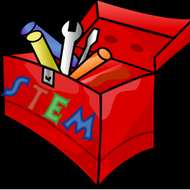
(View Complete Item Description)
This unit includes four lessons and two student working days that culminate in students designing an interactive audio and visual display using emaze. The purpose of this visual display is to document their journey throughout the process of becoming familiar with the traceability (and sometimes lack thereof) of beef, produce, and seafood regulations. With their visual displays, they will be able to educate their family, peers, and the public about food consumption choices and provide background knowledge about its origins.
Using inquiry-based reading and reading apprenticeship strategies, students will explore an anchor text as well as two supplemental texts which they will use to develop their own essential and supporting questions to guide their research. AP Environmental students will explore a variety of texts and resources to increase their knowledge and awareness of where our food (seafood, beef, and produce) in the United States originally is located, how it was obtained, and the laws that govern the process behind the scenes.
Material Type:
Activity/Lab,
Homework/Assignment,
Unit of Study
Authors:
Lori Zeman,
Justin Pierce,
Kortney Kavanagh




















